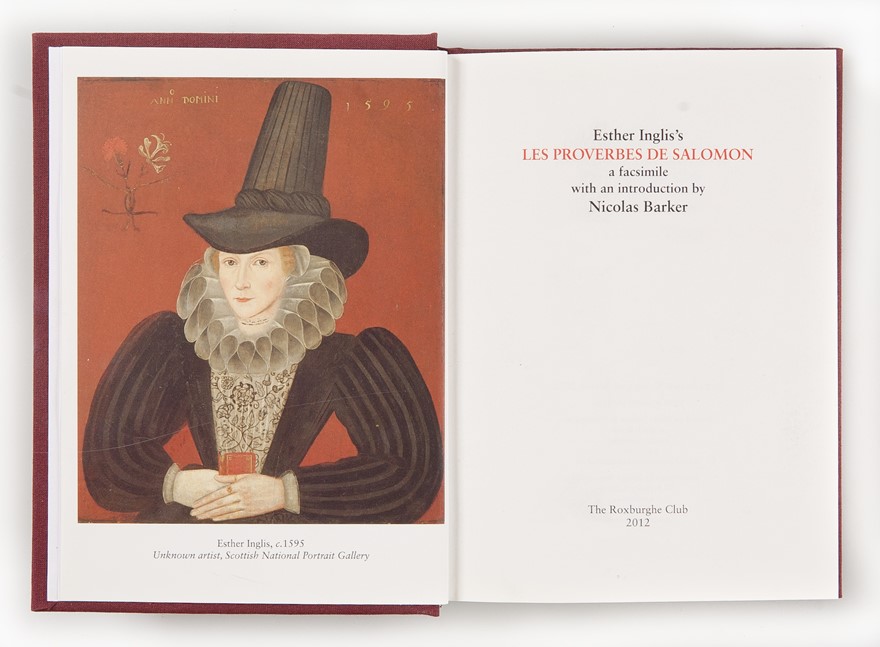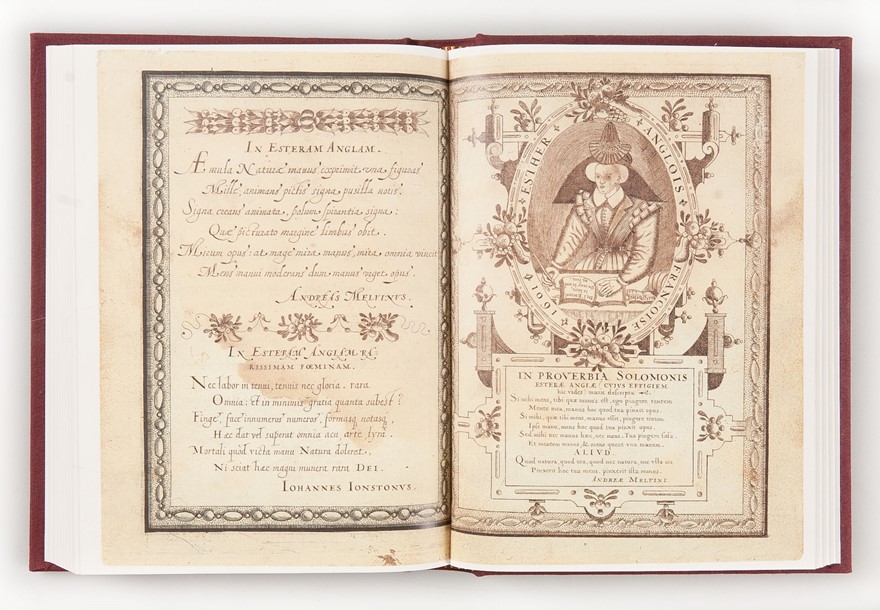Esther Inglis’s Les Proverbes de Salomon a facsimile with an introduction by Nicolas Barker.
INGLIS Esther. (2012.)
£60.00
Please contact us in advance if you would like to view this book at our Curzon Street shop.
Small 8vo. xiii, 124, 69 (facsimile) pp., including a colour portrait of Esther Inglis and two colour plates. Bound in red cloth. London: The Roxburghe Club,
ISBN 97800901953186. Printed by Butler, Tanner & Davis, Frome, Somerset & distributed by Maggs Bros. Ltd.
Dedicated and presented to the President and Members of The Roxburghe Club by Victoria, Lady Getty. 200 copies available for sale.
Facsimile of a calligraphic manuscript of Les Proverbes de Salomon written by esther Inglis in Edinburgh in 1601 originally for Catherine de Bourbon (1558-1604), sister of King Henri IV, altered probably for Sir Thomas and Lady Hayes. The manuscript was acquired by the late Sir Paul Getty, K.B.E. in 1977 and is now in The Wormsley Library.
Esther Inglis (1570-1624) was the daughter of Nicholas Langlois and Marie Presot, French Huguenots who fled the country in 1569 and settled in Edinburgh. Around 1596 she married Bartholomew Kello, a presbyterian minister, and she made a living with her pen, creating some fifty-five jewel-like manuscripts of religious texts or poems which were beautifully bound in embroidered or gilt leather covers and dedicated to the rich and powerful, ranging from the royal family, members of the court and senior clergymen, down to her landlord, in the hope of financial reward. The manuscript is a calligraphic tour-de-force; it opens with a penwork self-portrait of Esther at her writing desk with pen and paper and is written in a variety of accomplished hands, including an open ‘droicte entrelacée’ (the letters woven in and out with a continuous cord ending in tassels), ’ronde venecienne’, ’lettre chanceleresque’, ’lettre plaisante’, ’lettre frizée’ (joined in continuous interlinear rope-work), ’lettre coupee’, ’lettre chanceleresque penchee’, ’lettre carree’, ’lettre d’estat’, ’lettres mignardes’, ’lettre ancienne’, and ’droict entrelacée’ (threaded with cord through trompe-l’oeil slits). The facsimile is introduced by Nicolas Barker who places Inglis‘s life and work within the wider context of Renaissance writing-masters and their works. Barker has also updated the census of Inglis’s manuscripts compiled by Aydua Scott-Elliot and Elspeth Yeo in 1990 recording several newly discovered manuscripts and the new locations of those which have changed ownership.
Stock Code: 230968





